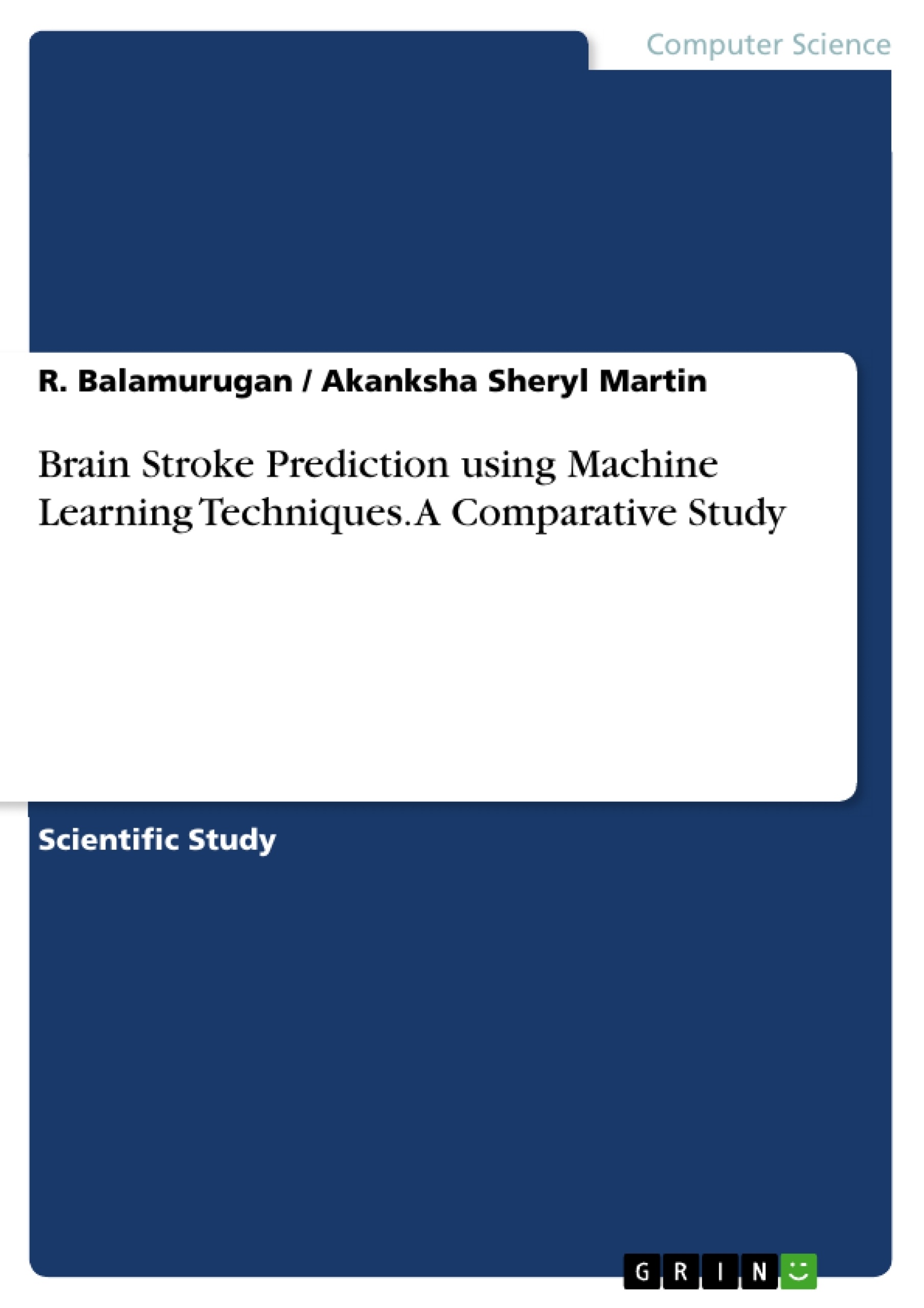The use of machine learning for stroke prediction represents a powerful tool in enhancing patient care and reducing stroke-related mortality and disability. By focusing on key risk factors and leveraging extensive healthcare data, machine learning can substantially improve the accuracy and effectiveness of stroke prediction. This project aims to harness the potential of machine learning to better identify individuals at high risk of suffering a stroke and provide them with early, targeted interventions, ultimately saving lives and improving patient outcomes.
The importance of predicting strokes cannot be overstated. Strokes are a leading cause of mortality and disability worldwide. Early detection and prevention can have a substantial impact on patient outcomes. Leveraging machine learning algorithms for stroke prediction can significantly improve the accuracy and efficacy of identifying high-risk patients.
The primary objective of this project is to develop a precise stroke prediction system that can recognize high-risk patients based on a wide range of risk factors, including age, gender, medical history, lifestyle choices, and genetic factors. By creating a reliable model for stroke prediction, healthcare professionals can administer early interventions, potentially reducing stroke incidence and improving patient outcomes.
The project's scope includes analyzing electronic health record (EHR) data to identify the key elements essential for stroke prediction. EHRs contain valuable information, including patient demographics, medical history, clinical findings, and other factors relevant to constructing a stroke prediction model.
Machine learning for stroke prediction involves several stages. Initially, a dataset of relevant variables potentially influencing stroke occurrence is identified. This dataset may encompass demographic details, clinical information, laboratory tests, medical images, genetic data, and lifestyle factors. Subsequently, the dataset is cleaned and preprocessed to remove noise and inconsistencies.
A machine learning algorithm is chosen, and the data is divided into training and testing groups. The algorithm is trained using the training data to identify patterns and relationships between variables and stroke occurrence. Once the model is trained, it is evaluated using the testing data to assess its performance.
- Citar trabajo
- Dr. R. Balamurugan (Autor), Akanksha Sheryl Martin (Autor), 2023, Brain Stroke Prediction using Machine Learning Techniques. A Comparative Study, Múnich, GRIN Verlag, https://www.grin.com/document/1387628
-

-

-

-
¡Carge sus propios textos! Gane dinero y un iPhone X. -

-
¡Carge sus propios textos! Gane dinero y un iPhone X. -

-
¡Carge sus propios textos! Gane dinero y un iPhone X. -

-
¡Carge sus propios textos! Gane dinero y un iPhone X. -

-
¡Carge sus propios textos! Gane dinero y un iPhone X. -

-
¡Carge sus propios textos! Gane dinero y un iPhone X. -

-
¡Carge sus propios textos! Gane dinero y un iPhone X. -

-
¡Carge sus propios textos! Gane dinero y un iPhone X. -

-
¡Carge sus propios textos! Gane dinero y un iPhone X. -

-
¡Carge sus propios textos! Gane dinero y un iPhone X. -

-
¡Carge sus propios textos! Gane dinero y un iPhone X. -

-
¡Carge sus propios textos! Gane dinero y un iPhone X. -

-
¡Carge sus propios textos! Gane dinero y un iPhone X. -

-
¡Carge sus propios textos! Gane dinero y un iPhone X. -

-
¡Carge sus propios textos! Gane dinero y un iPhone X. -

-
¡Carge sus propios textos! Gane dinero y un iPhone X.

